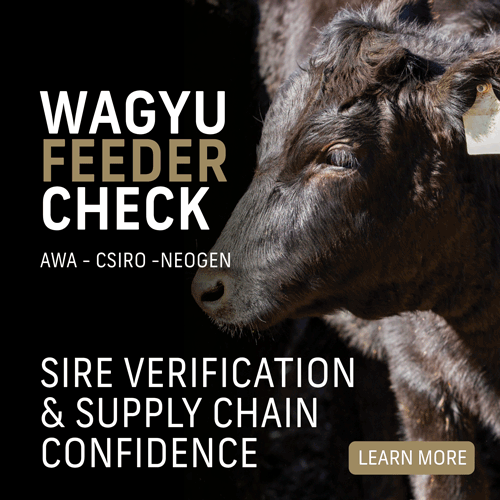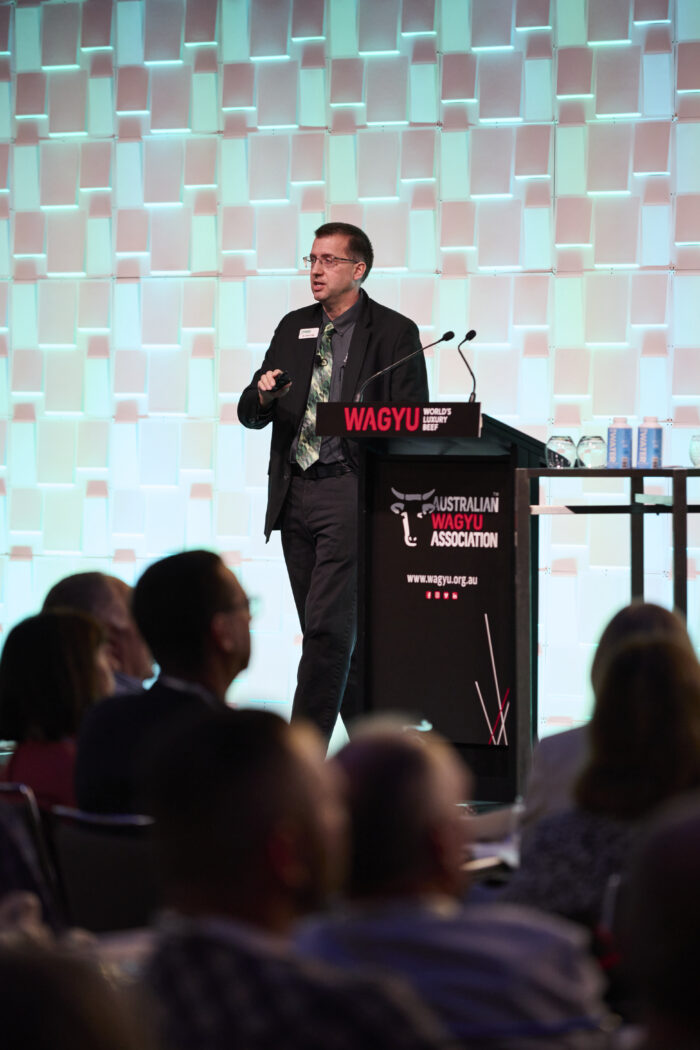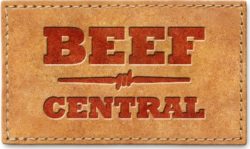A new genetic selection tool launched at the Wagyu industry’s annual conference in Sydney last week has the potential to save the industry an estimated $58 million over five years in delivering better Wagyu F1 longfeeding outcomes.
Wagyu Feeder Check is a new commercial genomic screening tool that has been developed by CSIRO in collaboration with the Australian Wagyu Association and commercialised by animal genetics company Neogen.
Based on a DNA tissue sample, Wagyu Feeder Check provides an estimate of each F1 feeder animal’s genetic ability to perform for a range of five important Wagyu production traits.
Eight different F1 supply chains from WA to Queensland provided carcase and genetic data for the development of the tool by CSIRO.
The traits targeted are:
- Feedlot average daily gain. Groups of F1s often showed as much as 400grams/day variation between best and worst
- Carcase weight (100kg weight difference are not uncommon within longfed cohorts)
- P8 subcutaneous fat. Differences could often be 18-19mm variance
- Eye muscle area (22sq cm between the top and bottom)
- AusMeat marbling score, measured either by the MIJ objective measurement camera or graders. The average among Wagyu F1 in Australia is around MS 5.6, although variation exists from 3s to 8s-9s. Anything above 5 is starting to make money.
For interpretation and decision-making purposes, results for each trait are ranked from 1-10, on what is called a molecular trait ranking, with the best around 10, and the worst, scored a 1, for a breed average a 5. This makes it simple to sort feeder animals by trait, and by multiple traits, using an easy-to-follow ‘spiders web’ graph.
The project has also led to the development of the Wagyu Feeder Check Index, which is similar to the AWA’s existing F1 Terminal Index currently published on Breedplan. A set of weightings has been suggested for each trait, but these can be changed to suit any users’ own requirements.
 The new Feeder Check product delivers two attributes – sire verification, and a new term called ‘supply chain confidence’ allowing lotfeeders to make better decisions over feeding F1 animals.
The new Feeder Check product delivers two attributes – sire verification, and a new term called ‘supply chain confidence’ allowing lotfeeders to make better decisions over feeding F1 animals.
In backgrounding the new selection product, the Australian Wagyu Association’s Dr Matt McDonagh said the AWA had a database of 70,000 sires, including all bulls registered in the past seven years that were genotyped animal records in its database. That made it possible to parent-verify any F1-Fullblood animal to work out who ‘dad is.’
That data was taken across multiple supply chains and provided to the CSIRO, which worked out the relationships between genotypes and phenotypes to determine whether a genomic prediction could be developed, whereby a DNA sample could be taken, providing an estimate of that animal’s genetic ability to perform for the production traits listed above.
“That can be very important, giving the power to screen animals against carcase data, and potentially identify the poorer performing sires that are costing the whole supply chain a lot of money,” Dr McDonagh said.
At the time the project was first thought of, the industry was in the middle of one of the worst droughts ever seen, and grain prices were through the roof, Dr McDonagh said.
“There were also some questions around sustainability in the feedlot sector, in using all that grain to feed cattle, and whether that would be a viable activity for Wagyu, going forward,” he said.
“The question arose: could we identify those poorer-performing F1 animals that were not worth feeding for 380 or 400 days – exiting them much earlier from the program to avoid wasting that resource?”
“That would mean any investment in feeding is only going into animals which are valuable to us, in delivering the performance outcome in terms of marbling and other traits that justifies the investment.”
“This is going to optimise resource use efficiency – we’re not going to be wasting the resources that we used to pump into those poor performing cattle.”
The result would in turn help improve profitability and resilience for the whole Wagyu sector.
“Most Wagyu supply chains say if they are not achieving marbling scores of 5 or higher in F1s, it is costing them about $1000 per carcase in lost profit,” Dr McDonagh said. “Essentially with the poor performers, it is costing considerably more to feed the animal than it is worth as a carcase.”
“Breaking it down into crude feed cost estimates, it costs $5 per day for 350 days to feed an F1 steer, or $1750. If we could find a way to identify and remove the worst performing animals, push them into a shortfed program of say, 150 days, it would cost only $750 to feed them. That’s a difference of $1000 in feed costs alone,” he said.
If there are 220,000 Wagyu F1s on feed in Australia today (Beef Central’s own assessment made during the recent Top 25 Lotfeeders report was 240,000 Wagyu on feed – both that figure included everything from F1-Fullblood), removing the worst 10pc would account for 22,000 head, which would save around $1000/head, or $22 million in saved annual feed costs, Dr McDonagh said.
The other opportunity using the new Feeder Check genomic tool was to identify the sires involved.
“If we can identify the sires of those low-performing animals – say taking out the bottom 5pc of sires likely to under-achieve in progeny performance, it would save an estimated $11 million in costs each year,” he said.
Removing the low performing progeny in year one, followed by the low-performing sires whose progeny would have hit the system in years two to five, over five years it would save the industry about $58 million, Dr McDonagh said.
“They are big numbers. It future proofs our herd by getting rid of those sires that we don’t want in the future.”
“The future is now”

Neogen’s Dr Jason Lilly talking at the WagyuEdge’23 Conference during the launch of the Wagyu Feeder Check.
Neogen’s head of global genomics Dr Jason Lilly, said Wagyu Feeder Check was the first global tool and the most innovative tool, developed in Australia, to help advance the Wagyu breed and make more money.
“As we have all heard, we have to be more sustainable, more green, and more sensitive to peoples’ taste – this is what this product does,” Dr Lilly said.
“The best product for the global Wagyu industry has been developed in Australia, by Australians. They are the ones who dominate the global Wagyu beef industry.”
“Five or ten years ago, it would have been hard to believe that a feedlot could unload a truckload of cattle, take a small tissue from those animals and within days, use a secret decoder that can tell them which of those animals are going to grade better and make the feedlot more money; and which ones might be better being sold or managed differently.”
“Ladies and gentlemen, the future is now,” Dr Lilly said, with some dramatic effect. “Genomic technology is here – we have crossed the chasm.”
While beef cattle have around three billion genetic markers or base-pairs, only about 100,000 of those have been identified by scientists as delivering the right information for production traits, the AWA conference was told.
“It used to cost a billion dollars to sequence an animal’s breed genome. Today, for $30-$50 an owner can interrogate the meaning of life, and make decisions which will make them more money. The technology is amazing,” Dr Lilly said.
He said the Wagyu Feeder Check product would continue to evolve, year over year, as more data was added, making it more and more accurate.
More information can be found on the AWA Wagyu Feeder Check website.
First published by Beef Central on 28/04/2023

